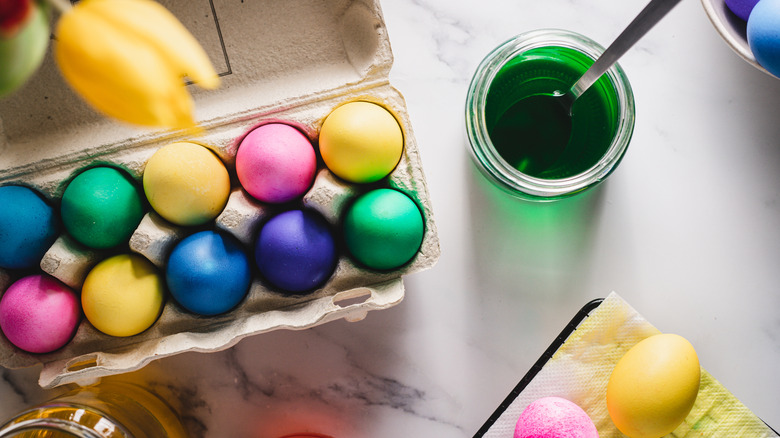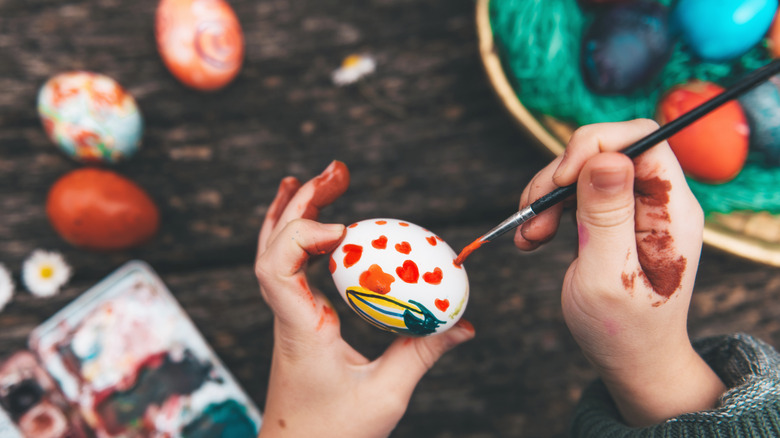Brown Vs White Eggs: Which Are Best To Paint For Easter?
It doesn't matter if there are children around the house or not — painting Easter eggs is a fun activity to try around this time of the year. These colorful eggs look lovely lined up on the countertop or next to sweet treats in an Easter basket. However, if you've ever done it before, the painting part can be a bit tricky. The dyes — even if you follow the instructions on the packaging down to a tee — may not "grip" very well to the eggshell, and you could end up with washed-out-looking eggs that don't quite look like the ones you see online.
Surprisingly, it's very possible that the problem here isn't the dye. In fact, it's the eggs!
Depending on the design and the color scheme you're envisioning for your Easter eggs, you need to pick the right "canvas" for the job — either white or brown eggs. Which type of egg you should use depends on the Easter egg decorating idea you choose and the colors that you plan to use. White eggs are best for pastels or bright colors, and brown eggs are better for deeper colors or hand-drawn designs.
How white and brown eggs take to colors
If you're aiming for vibrant colors or working with pastel shades, white eggs are your best bet. The white tone will work pretty much like a standard page of notepad paper, giving you maximum brightness and allowing the colors to stay true to their hues. The downside is that some people report the white background can sometimes give the dye a "washed-out" look, especially if you use translucent paints like watercolors. If you don't like the look, you can either lay the watercolors on thick with several layers to "hide" the white shell, or opt for opaque paints like non-toxic acrylics specifically designed for Easter crafts. (Don't use regular acrylic paint onEaster eggs if you plan to eat them, because the paint is not safe to ingest.)
On the flip side, brown eggs offer a more natural and earthy base. While they may tone down the brightness of colors slightly, they impart a warmer appearance in return. This makes them perfect for intricate hand-drawn designs or deeper shades like navy blue, resulting in richer-looking Easter eggs.
Of course, this can be inconvenient if you want to go for a bright design. Fortunately, there's a workaround. You can try to brighten the eggshells of brown eggs first by dipping them in white vinegar. The vinegar can wash out some of the pigments within the eggs and reduce the deep brown shell to a light-cream tone that'll take better to light paints!

